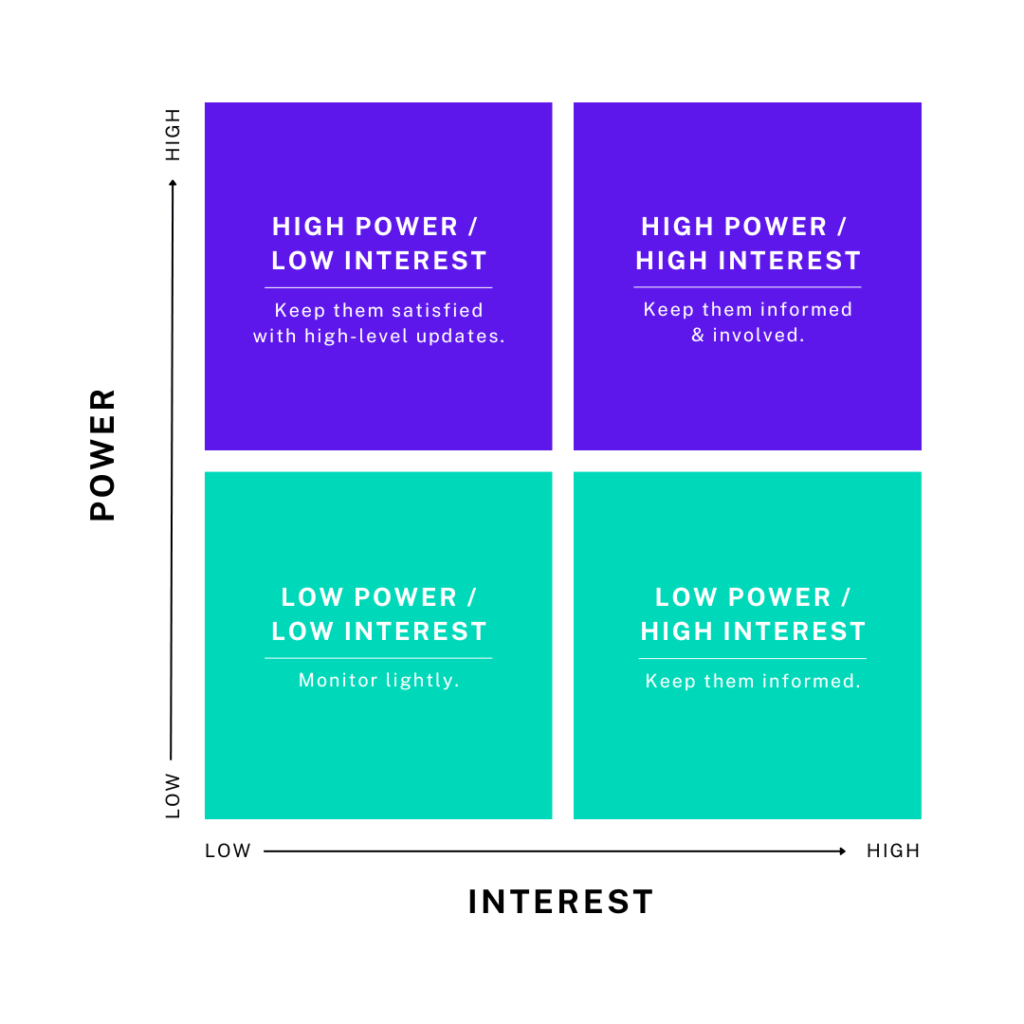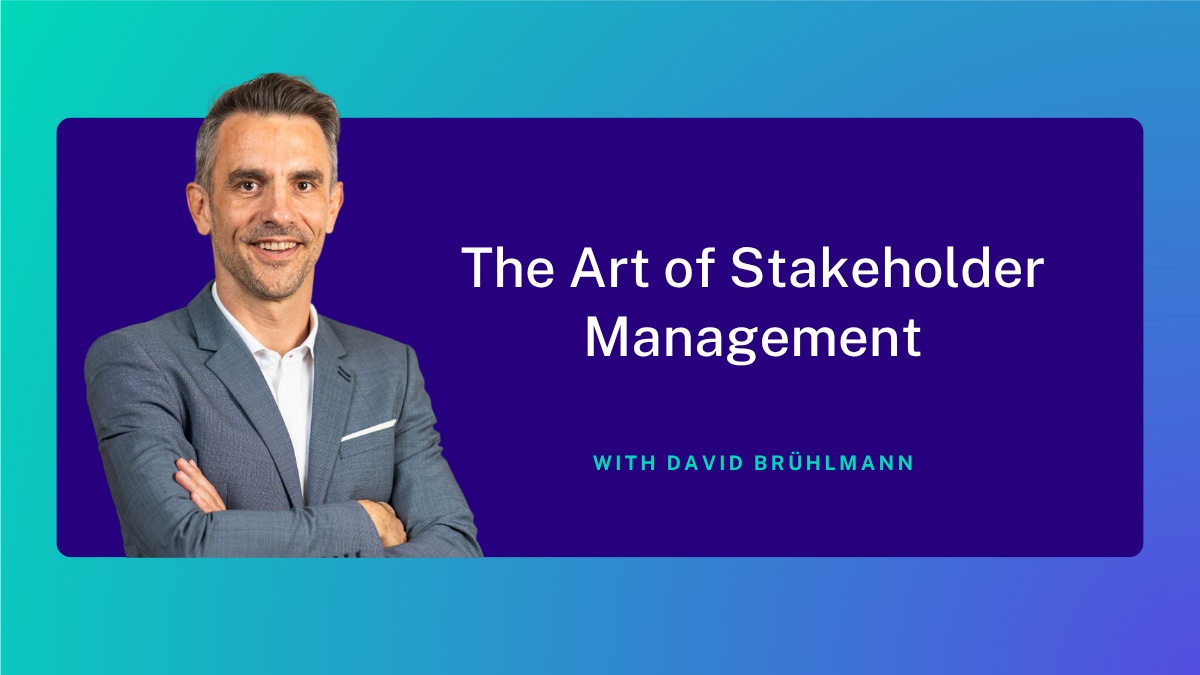Many bioproduction development projects fail due to inadequate stakeholder engagement. It's not that teams don't care; stakeholder strategy often takes a back seat to more technical concerns. However, ignoring your stakeholders can sink your project before it gets off the ground.
In this article, I will outline five clear, actionable steps to engage your stakeholders, boosting alignment, reducing friction, and increasing your chances of success.
This concept is discussed in greater detail in an episode of the Smart Biotech Scientist Podcast, hosted by David Brühlmann, founder of Brühlmann Consulting.
Why Stakeholder Engagement Matters
Here's a quick story: I once led a biologics tech transfer project to our 15,000-L facility and encountered significant friction with a quality control (QC) colleague. He seemed resistant to every request I made. After some honest conversation, I realized the issue wasn't personal; it was about predictability.
The last-minute nature of my requests disrupted his workflow. By understanding his perspective, we found common ground and built a far more effective working relationship. That moment reminded me just how vital stakeholder understanding is.
Your key stakeholders have the power to support or derail your project. That's why managing their needs, expectations, and communication styles isn't optional. It's critical for long-term success and alignment.
Step 1: Identify Your Stakeholders
Before you create any plans or strategies, the first step is to identify your stakeholders. Start with a brain dump. Who does your project impact, positively or negatively? Who has a say in your success? Think broadly and inclusively.
Ask yourself:
- Who has power over this project?
- Who wants it to succeed or fail?
- Who's affected, even indirectly?
You can use a simple list, spreadsheet, or mind map. Don't worry about sorting yet. Just write down names or roles on paper so you can begin to organize them later.
Step 2: Classify Your Stakeholders
Once you've listed them, classify each stakeholder using a Power-Interest Grid. This tool helps you decide who to involve, how often, and in what capacity. It also prevents you from wasting time on people who don't deserve much attention while ensuring you don't neglect key influencers.
There are four categories:
- High Power / High Interest: Fully engage these stakeholders. Keep them informed and involved. Think project leads or strategic partners.
- High Power / Low Interest: Keep them satisfied with high-level updates. Think of senior execs who oversee budgets but don't need daily details.
- Low Power / High Interest: Keep them informed. These are usually the people on the ground who care about the outcome but lack decision-making authority.
- Low Power / Low Interest: Monitor lightly. These people shouldn't be ignored but don't need constant updates.

This categorization gives you a clearer idea of where to focus your energy. It ensures you're tailoring your approach appropriately and not applying a one-size-fits-all strategy.
Step 3: Build a Stakeholder Management Strategy
With your list and classification, you can now build a tailored strategy. This is where stakeholder management becomes structured and proactive. It's not just about identifying roles, it's about planning how you'll interact with each person based on their influence and interest.
Create a profile for each stakeholder, outlining:
- Their role in the project
- Their level of power and interest
- Their potential concerns
- Their desired outcomes
- Actions you can take to meet their needs
One easy way to organize this is with a spreadsheet. Use columns for:
- Stakeholder Name or Role
- Impact Level (High, Medium, Low)
- Support Level (Resister, Neutral, Supporter)
- Reason for Support or Resistance
- Engagement Actions
- Preferred Contact Method
This method helps you stay organized and provides a clear snapshot of your stakeholder environment. It provides a structured approach to plan and adapt as your project evolves.
Step 4: Create a Communication Plan
Having a list and a strategy is one thing. Communicating it effectively is another. Once you've mapped out your stakeholders and strategy, you must decide how to communicate with each group. This step ensures that your message reaches the right people.
Your communication plan should outline:
- What information needs to be shared
- The format (email, meetings, reports)
- Frequency of updates
- Who owns the communication
Tailor your plan to fit different preferences and influence levels. For example:
- Hold regular video calls with key decision-makers
- Use email or newsletters for low-power stakeholders
- Plan face-to-face sessions for critical discussions
Remember, communication is a two-way street. Listening to feedback is just as important as sharing updates. This plan keeps you accountable and ensures alignment stays strong.
Step 5: Put the Plan into Action
A great plan means nothing if it's not implemented. Once your strategy and communication roadmap are in place, it's time to execute. This is where consistency and flexibility work hand in hand.
Begin engaging stakeholders using the plan you've developed. Stick to your timelines and communication frequency, but stay open to adapting when new needs arise. Your approach will evolve, and that's okay.
Here's what this looks like in practice:
- Host regular check-ins with high-interest stakeholders
- Send summary updates after key milestones
- Proactively address resistance when it shows up
- Track feedback and adjust your approach if necessary
Stakeholder engagement is not a set-it-and-forget-it task. It's an ongoing relationship that requires attention, care, and adjustment.
The Real Value of Stakeholder Engagement
When done well, stakeholder management isn't just a project management task. It becomes a strategic advantage that drives success across all areas of execution. It helps with alignment, builds trust, and reduces resistance.
Let's recap the steps:
- Identify everyone your project impacts
- Classify stakeholders based on power and interest
- Build detailed profiles with their expectations and concerns
- Craft a personalized communication plan
- Engage consistently and adapt as needed
A thoughtful stakeholder approach shifts your work from reactive to proactive. That shift can make all the difference when facing unexpected challenges.
Final Remarks
A robust stakeholder strategy helps ensure your project delivers, not just technically but in terms of real-world adoption and success. It's not about ticking boxes. It's about building trust and alignment among the people who matter most.
So take a step today. Map out your stakeholder list, assess their power and interest, and build your strategy. You'll be amazed at how smoothly your project runs.
If you need assistance with stakeholder engagement or bioprocess project strategy, you can schedule a complimentary assessment at https://bruehlmann-consulting.com.
Let's make stakeholder strategy a cornerstone of biotech project success.
David Brühlmann is a strategic advisor who helps C-level biotech leaders reduce development and manufacturing costs to make life-saving therapies accessible to more patients worldwide.
He is also a biotech technology innovation coach, technology transfer leader, and host of the Smart Biotech Scientist podcast—the go-to podcast for biotech scientists who want to master biopharma CMC development and biomanufacturing.
Hear It From The Horse’s Mouth
Want to listen to the full interview? Go to Smart Biotech Scientist Podcast.
Want to hear more? Do visit the podcast page and check out other episodes.
Do you wish to simplify your biologics drug development project? Contact Us

